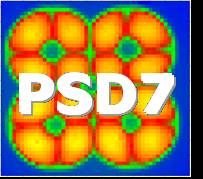Speaker
Mr
Christian Iacobaeus
(Karolinska Institute, Stockholm, Sweden)
Description
Noble liquids are excellent detecting medias: they have a rather
high stopping power, allow electrons and ions to drift and they have
an exceptionally high scintillation yield. All these properties are
simultaneously exploited in the noble liquid Time Projecting
Chambers (TPCs) which allow to visualize charge tracks, measure the
deposited energy and the light to charge ratio [1]. One of the
critical elements of noble liquid TPCs are photosensitive detectors.
Nowadays, vacuum PMs are usually used for this purpose. The main
drawbacks of these detectors are: the high cost and sensitivity to
magnetic fields (desirable for some experiments).
We have demonstrated recently that some gaseous detectors combined
with CsI photocathodes could operate at cryogenic temperatures
[2,3]. Such detectors are much cheaper than PMs and they are
insensitive to magnetic fields. In this report we will present our
new and yet unpublished results on the development of sealed planar
gaseous detectors (wire- type and hole- type) combined with
reflective and semitransparent CsI photocathodes and present the
studies of their operation inside LAr and LN2. Results of systematic
measurements of their quantum efficiencies, the maximum achievable
gains and long-term stabilities will be presented. In addition the
operation of gaseous detectors combined with other solid
photocathodes was also studied.
We will also present the results on the operation of windowless
photosensitive detectors (parallel-mesh-type and hole-type) placed
either in cooled gases or directly in vapours a few cm above the
noble liquid level will. Based on the obtained results a comparison
will be done between the sealed and windowless photosensitive
gaseous detectors. Note that the windowless detectors could also be
used for the detection of the charge tracks. As an example we will
describe our first experiments with muon’s charge track extraction
from the LAr and detected by a specially developed hole-type
detector made of G10 [4].
The successful operation of these detectors open realistic
possibilities in replacing PMs by photosensitive gaseous detectors
in some applications dealing with cryogenic liquids. Examples could
be: the ICARUS experiment, WIPMs search LAr/Xe detectors, noble
liquid scintillating calorimeters and cryogenic PETs.
Primary author
Mr
Christian Iacobaeus
(Karolinska Institute, Stockholm, Sweden)
